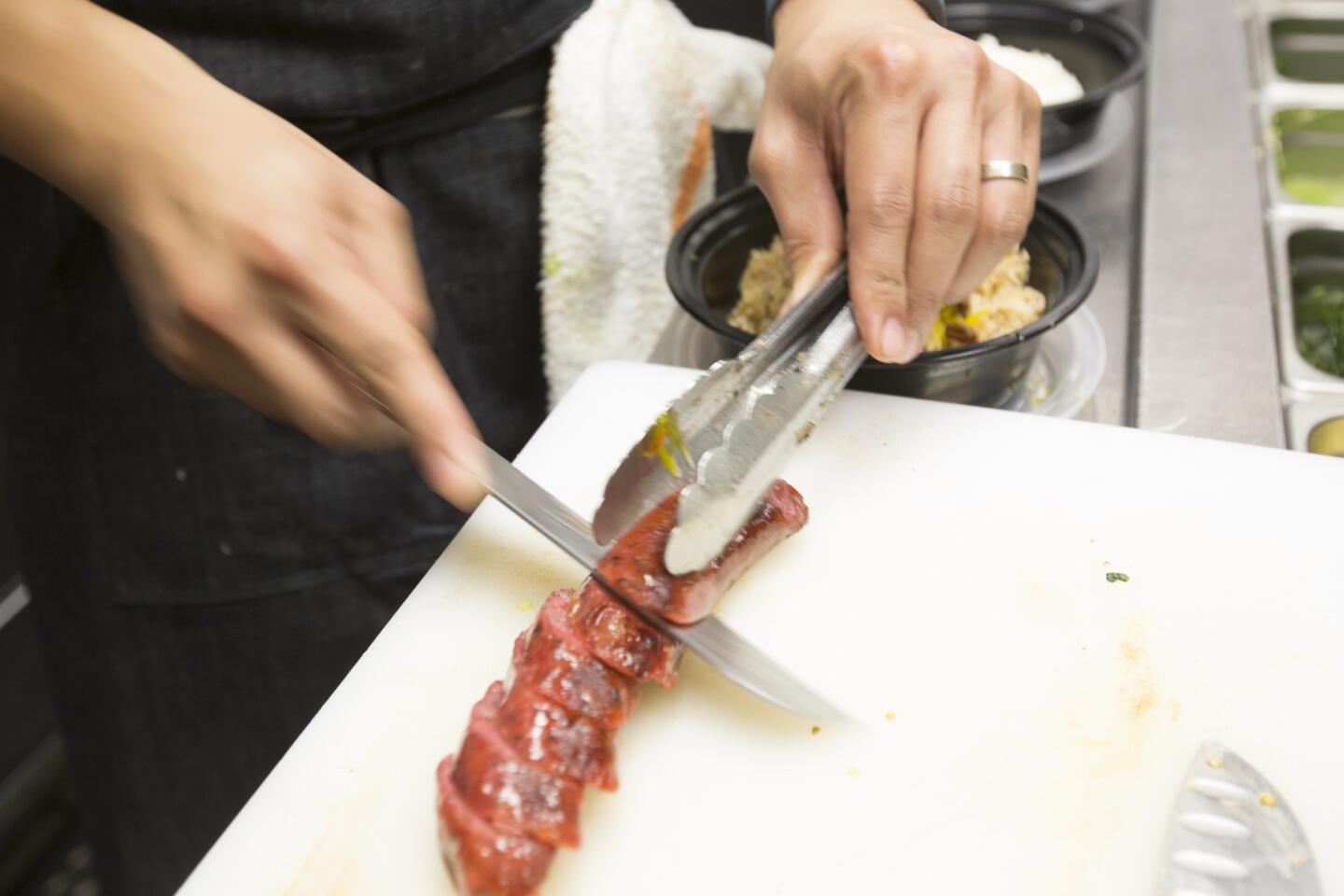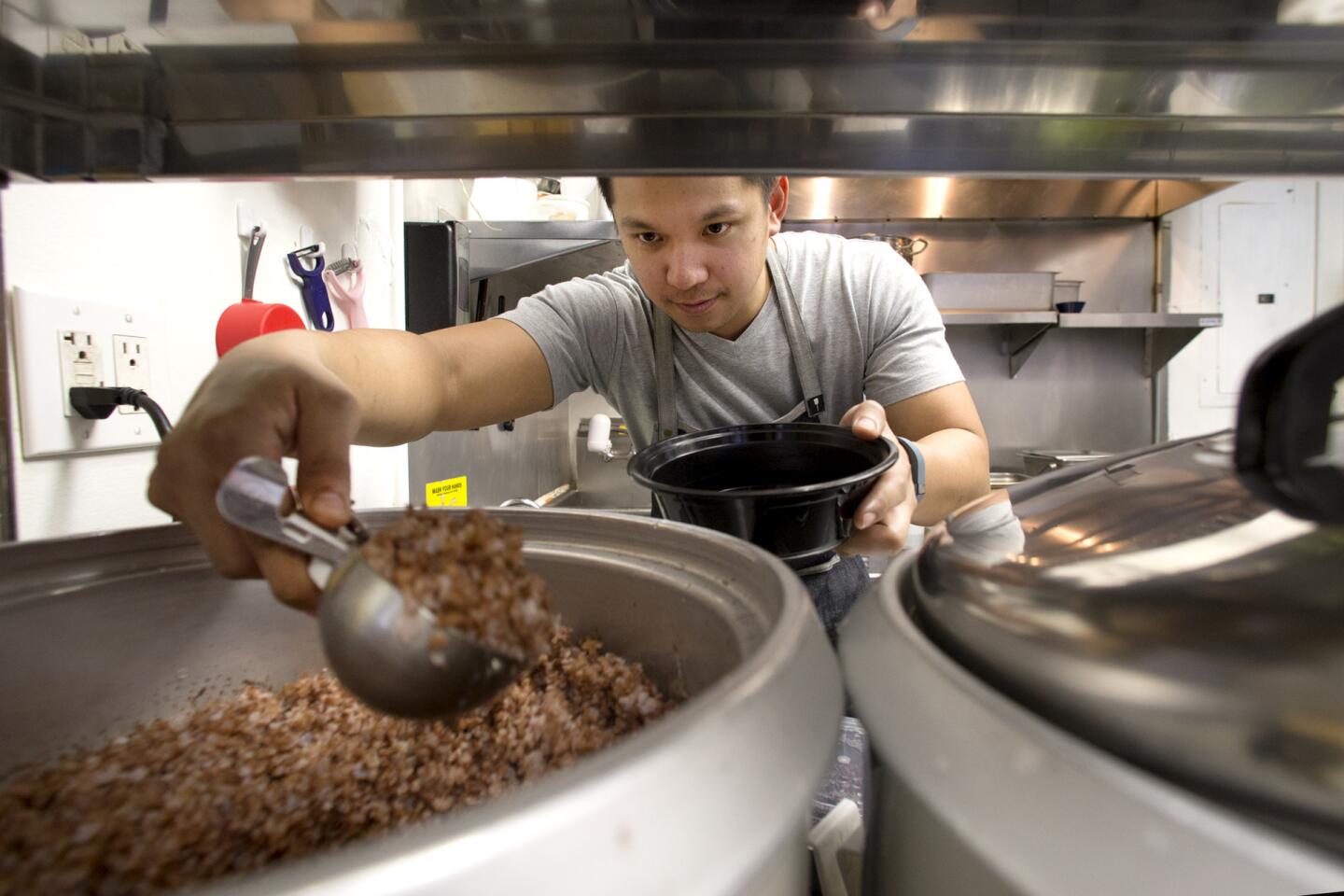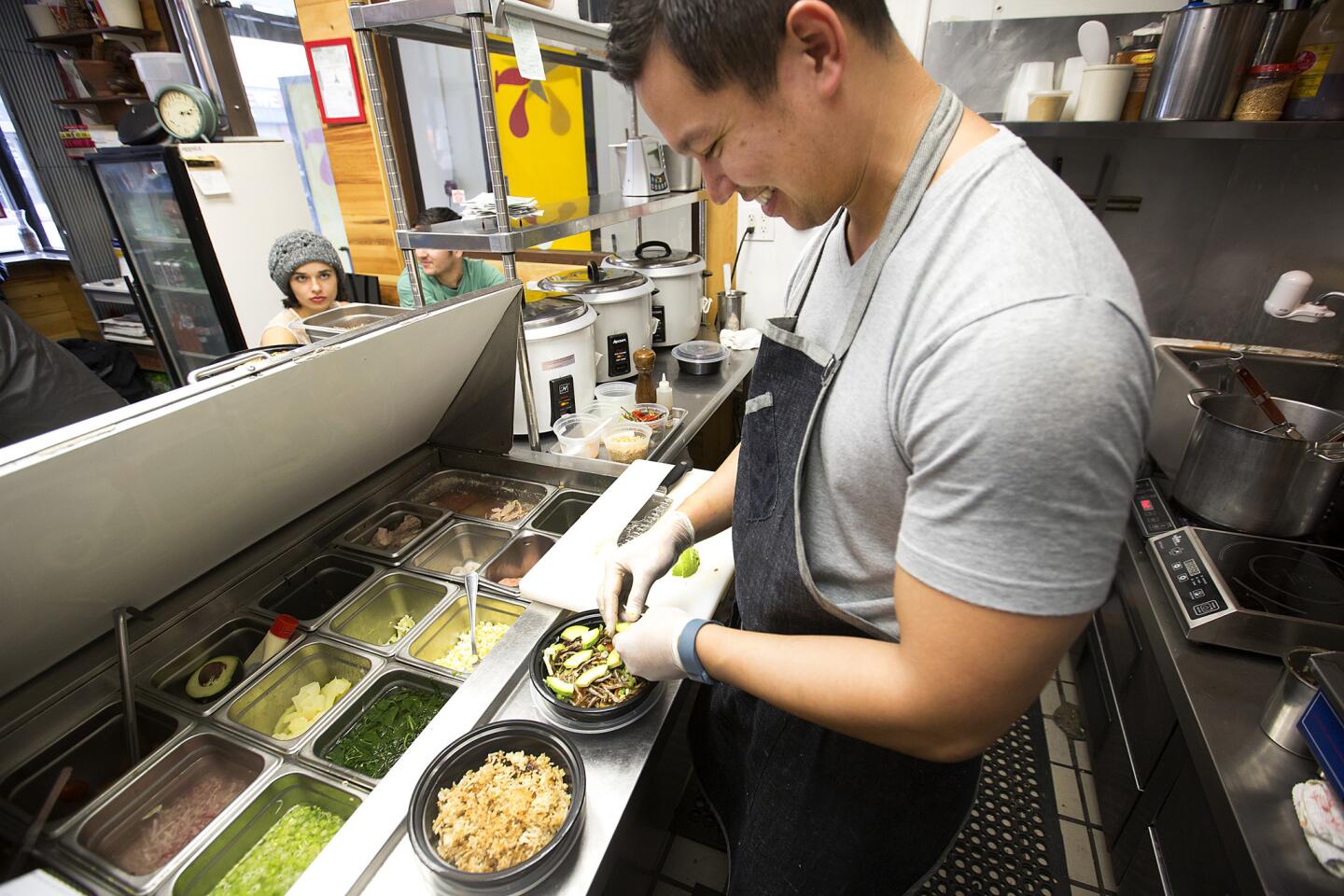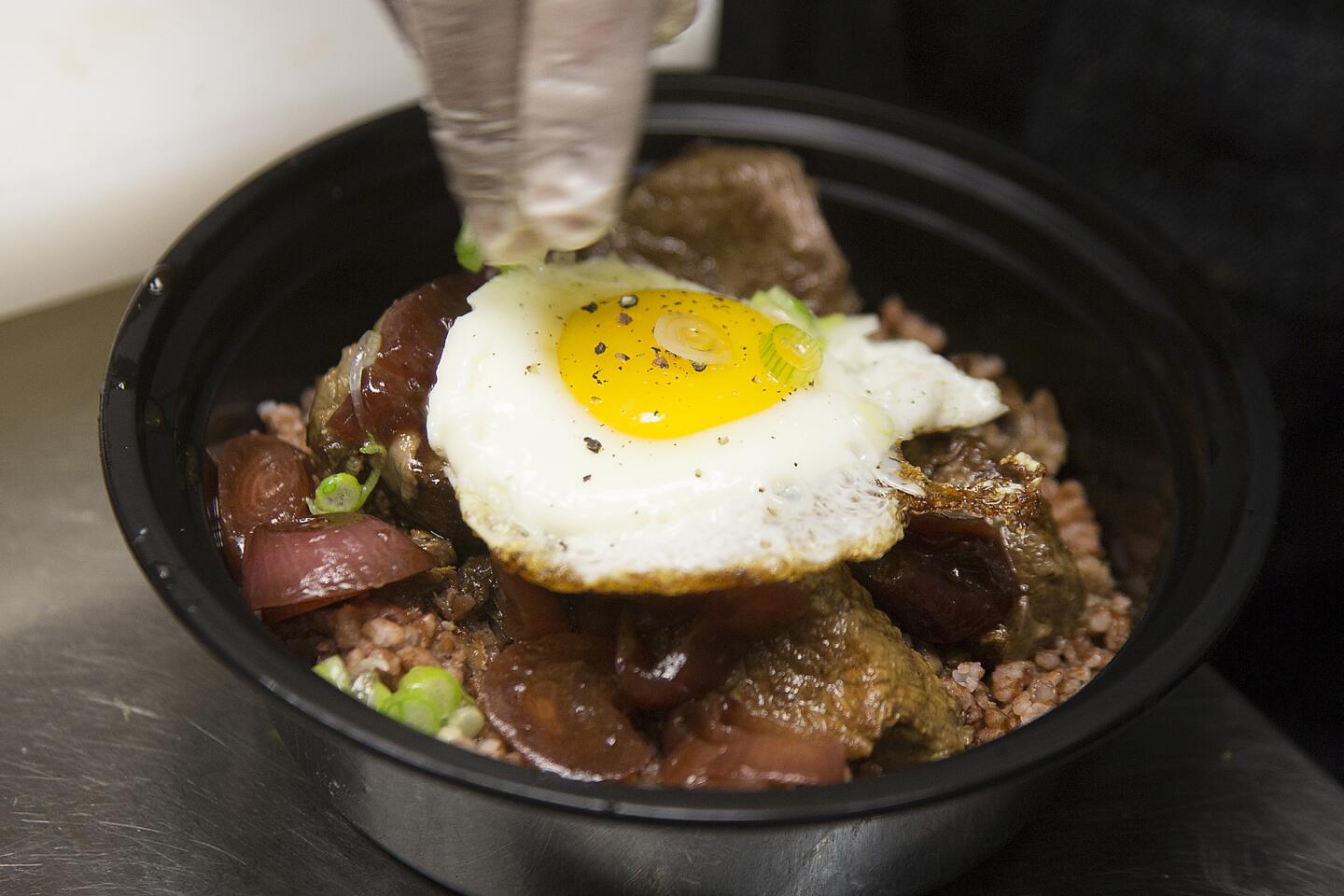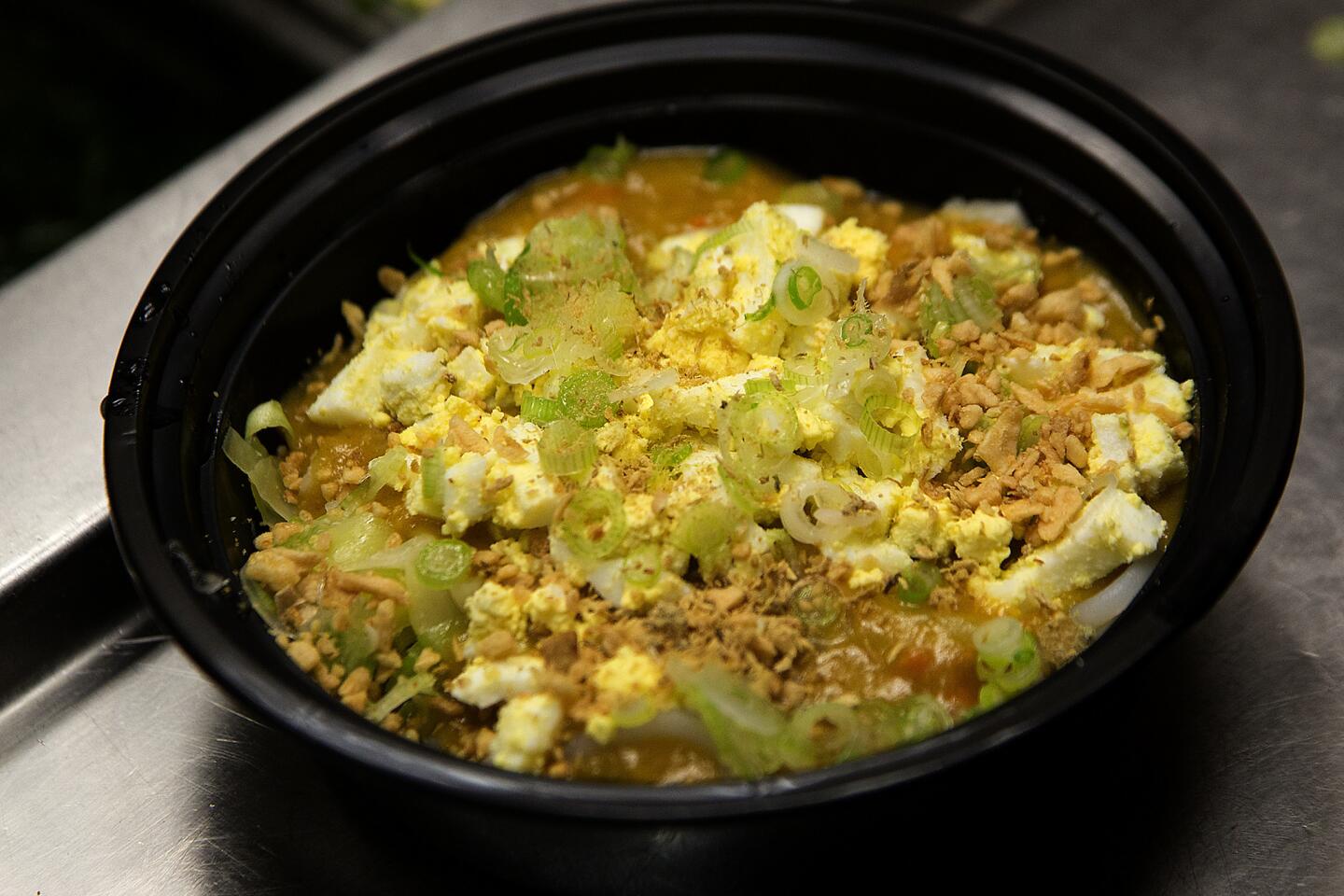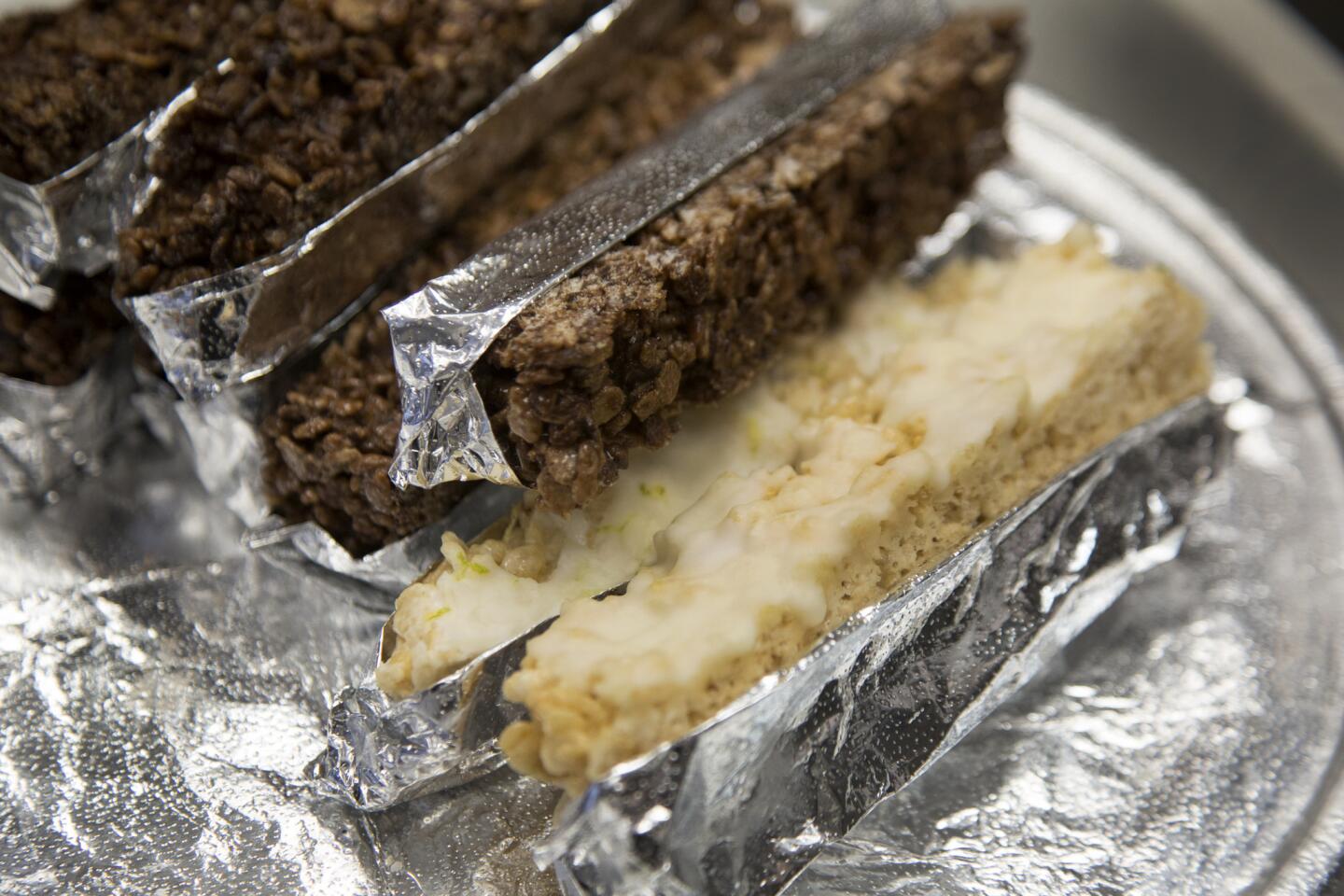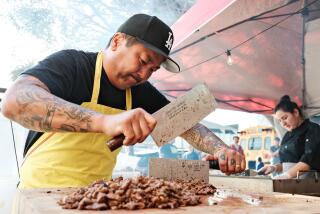A Filipino native who’s cooked for Guy Savoy and Thomas Keller opens Rice Bar in downtown L.A.
Rice Bar, a diminutive Filipino counter restaurant in downtown Los Angeles, is to a normal restaurant kind of like what tiny houses are to conventional houses. Seven neon yellow stools are jammed up to an L-shaped marble counter that takes up the majority of the 275-square foot space. Behind that counter, Rice Bar’s chef and owner Charles Olalia cooks on a jigsaw system made up of three rice cookers, two hot plates, a griddle and a warmer. Olalia, who is 32 and originally from Manila, opened this, his first restaurant, six months ago in what was previously a falafel joint.
It is a lot smaller than Patina, Joachim Splichal’s gorgeous flagship fine dining restaurant, which is less than a mile away from Rice Bar, and where Olalia was executive chef until a year and a half ago. Inside the Frank Gehry-designed Disney Hall, Patina’s soundproofed kitchen alone is twice the size of Rice Bar, has 10 cooks, two sous-chefs and three dishwashers, and has not only stoves, but an immersion circulator and a mesquite wood grill.

“I have four pots now,” said Olalia on a recent weekday afternoon, as he assembled bowls of fried rice and pork longaniza for the lunch crowd — about eight people filling the space like college students jammed into a Volkswagen. When Rice Bar opened last summer, the chef had one pot, and was trying to figure out how to keep it that way, maybe because it was easier to wash that one pot, as Rice Bar doesn’t have three dishwashers, but none at all.
Olalia’s decision to leave the world of fine dining to open a tiny restaurant and cook the food of his childhood wasn’t sudden, but rather an evolutionary process. And one, unsurprisingly, that has its roots in the house he grew up in, in which you’d have found seven kids, parents who were both doctors, and a cook named Chichi who has been in Olalia’s family for two generations, or close to 50 years.
“Every one of these recipes you can trace back to Chichi.” Olalia talked while he cooked, ladling ginger-infused chicken stock into a bowl, then filling it with rice, poached chicken and papaya. Chichi cooked all the food for the family, mostly in an outdoor kitchen with two stoves and no oven, making at least five dishes for every meal, every day. “I never cooked,” said Olalia. “The house was like a buffet.”
Instead of cooking, Olalia grew up eating Chichi’s food — “Imagine: us kids bringing their friends home for lunch; we’d call up Chichi and give him 15 minutes” — and got a degree in biology, and planned on going to med school like his parents. But then he had a change of heart. Maybe it was the buffets and banquets, the years in which his family’s kitchen operated “like a pop-up restaurant,” but Olalia suddenly switched gears and went to culinary school — and then relocated to San Francisco.
“I wanted to experience life and get away from my family — I was looking for something dysfunctional.”
His first job out of culinary school was at the Ritz-Carlton in Half Moon Bay, where he worked in garde manger and banquets for two years. Then he worked at Restaurant Guy Savoy in Las Vegas, a two-star Michelin French restaurant at Caesars Palace, for a year and a half. And then? “I decided I should go to the French Laundry.” Olalia was 23.
“I had no clue how this industry worked,” he says now, grilling house-made longaniza on the griddle at Rice Bar.
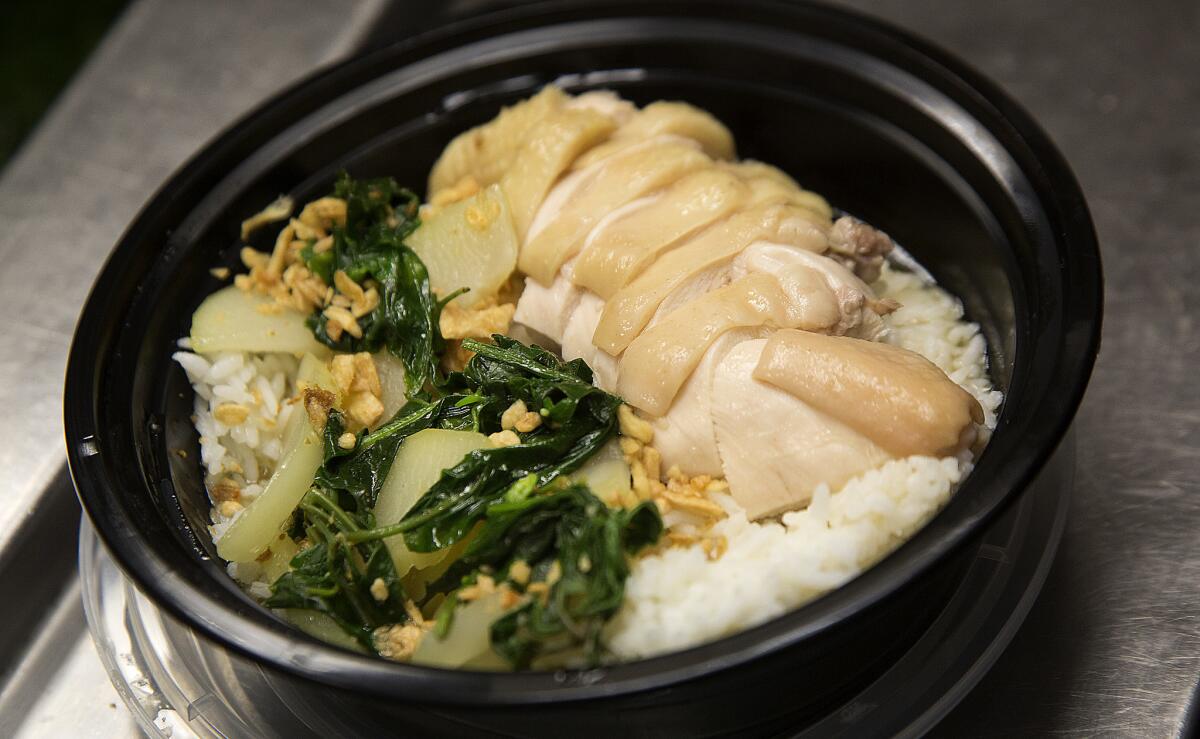
The chicken tinola dish has free-range chicken simmered in aromatic ginger broth and is served with young papaya, chili leaves and rice.
Olalia was at Thomas Keller’s Yountville restaurant, long considered the best in the country, for about five months. “I was like, ‘I’m ready to settle down in the wine country!’ Two words: culture shock,” he says. “You needed a lot of maturity to be in that kitchen.” After months as a commis, or junior chef, at the restaurant, he began to have second thoughts, thinking that maybe he should go back and try med school. “I was broke, but I wanted to learn how to be a cook and not about the white coat.”
So, after cooking for Guy Savoy and Thomas Keller, Olalia went to cook at a San Jose family-run bistro for two years. “I was looking for perspective. It was one of the best experiences of my life.”
See the most-read stories in Life & Style this hour >>
By then, two of Olalia’s sisters had moved to Los Angeles, and while visiting them, he began dating a woman — the two have since married — and started looking for a job in L.A. Thus Patina, the fine dining restaurant inside Disney Hall’s gorgeous silver jewel box, where Olalia cooked for the next four years, eventually becoming executive chef well before his 30th birthday.
“I trained him for two years,” says Tony Esnault, who was executive chef at Patina before leaving for Church & State, a French bistro in the Arts District, at which point Olalia succeeded him at Patina. “What I liked about him,” Esnault says of Olalia, “was he’s very methodical, he has a great personality, he’s always smiling. Some chefs, they cannot cook if they don’t have this, they don’t have that.”

Chef Charles Olalia scoops up garlic rice.
“The strongest form of cooking is from memory,” says Olalia now, handing a takeout container filled with fried rice over the shelf of Rice Bar to a lunchtime diner. “I didn’t realize that until I got married — I came back with a strong sense of needing to cook the food we cooked in the Philippines.”
After Guy Savoy and the French Laundry and those years at Patina, Olalia cooked for a time in Palos Verdes, then did a series of Filipino pop-ups. And while he tells the story, you get the sense that all those spacious kitchens and beautiful dining rooms were hallways toward his own memory palace, and that they combined with the house he grew up in, and ultimately opened the door to this tiny room on Seventh Street. Lodged between a bead shop and convenience store, it’s a place that Olalia has filled with counter and kitchen and customers, with bottles of sauces, six cookbooks (three by Roy Choi, Harold McGee and Paul Bertolli, and three Filipino cookbooks), and boxes of heritage rice — all jammed into a 275-square-foot box of memories.
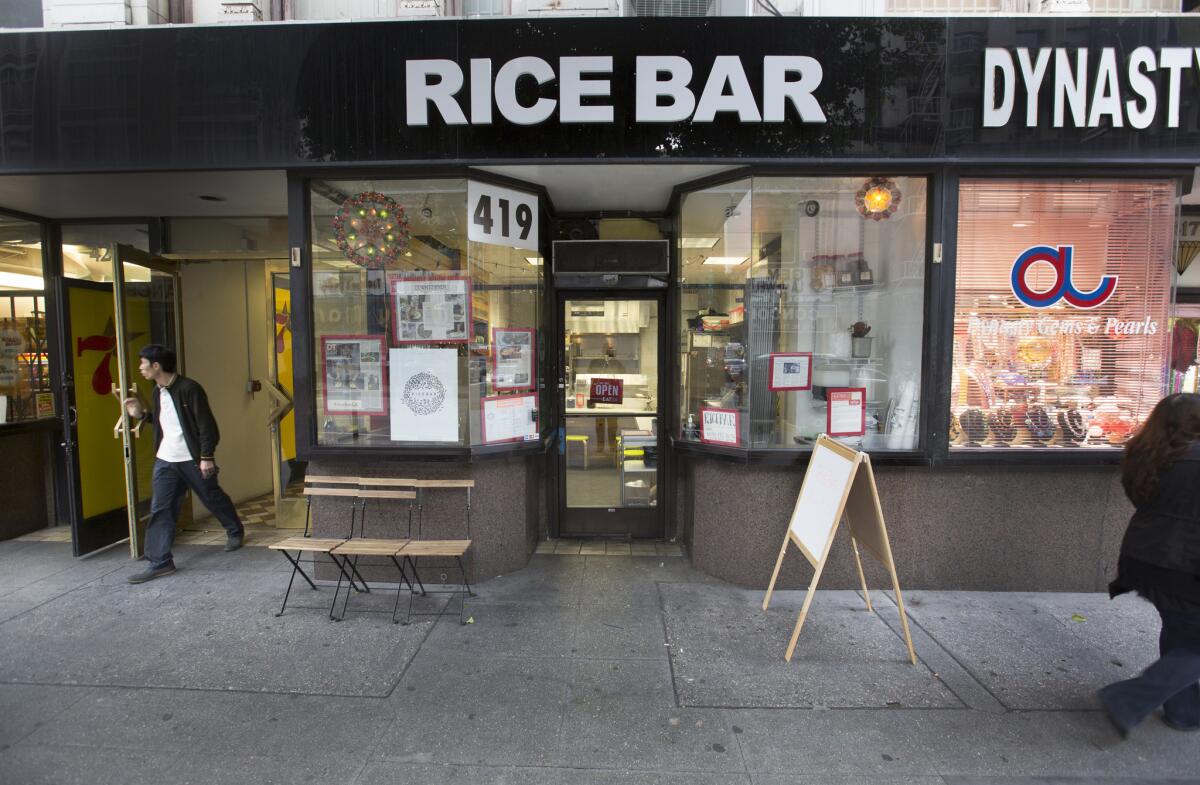
Look through the windows of Rice Bar and inside you’ll see a wrap-around marble bar where customers can belly up to one of seven stools for a sit-down lunch. Customers can also pick up orders to go and get a can of soda from a cooler.
“I sat there — there was nothing here — and I thought, this could be a Filipino restaurant,” he says now. “I wanted to present more than lumpia and adobo. I was very conscious that the format not be a steam table,” the chef says, smiling and thinking about the more typical buffet-style Filipino restaurants.
“People leave the Philippines for a reason — but they forget the good things. There’s nothing like your own culture.”
More to Read
Eat your way across L.A.
Get our weekly Tasting Notes newsletter for reviews, news and more.
You may occasionally receive promotional content from the Los Angeles Times.



